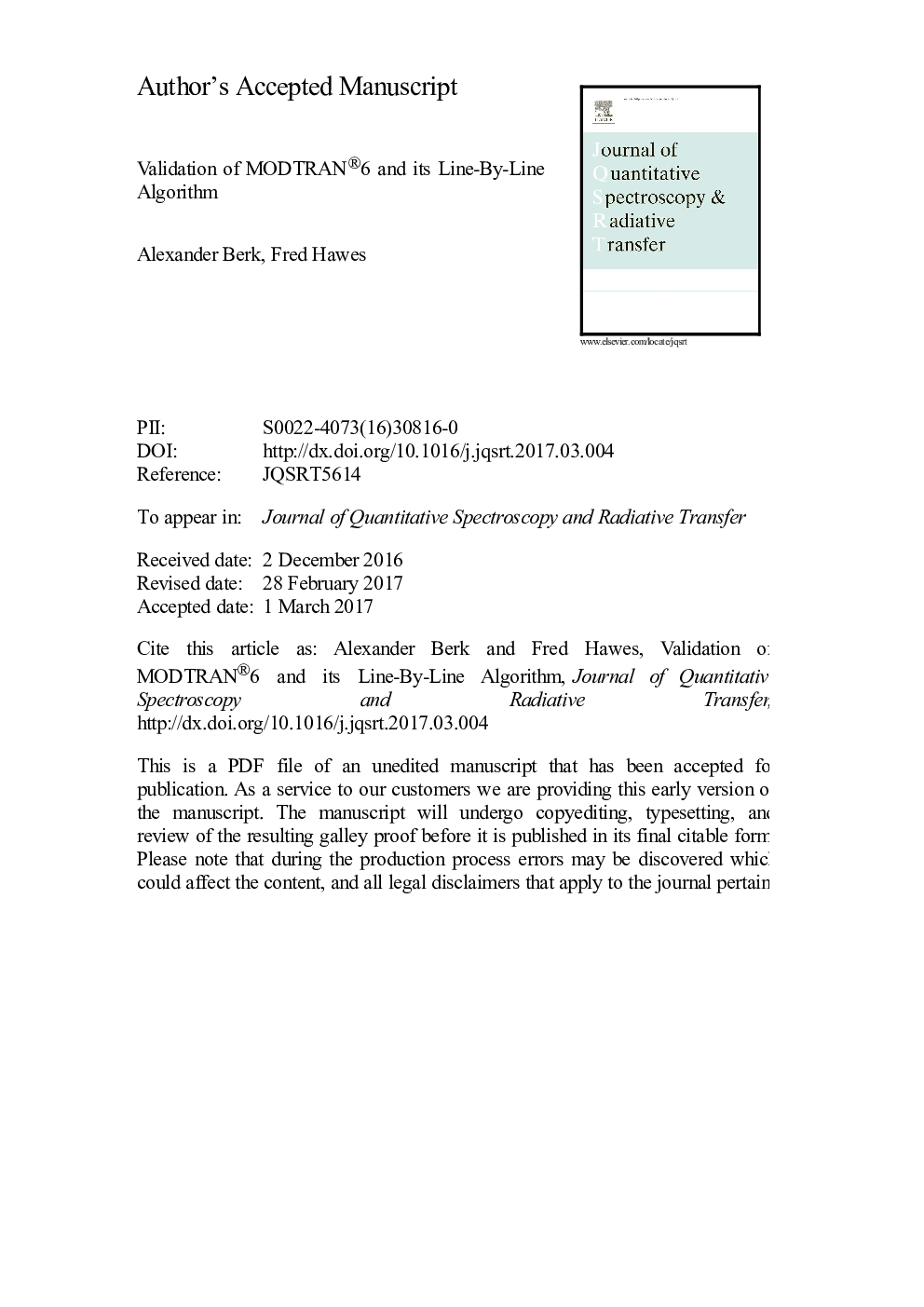| Article ID | Journal | Published Year | Pages | File Type |
|---|---|---|---|---|
| 7846547 | Journal of Quantitative Spectroscopy and Radiative Transfer | 2017 | 34 Pages |
Abstract
A new line-by-line (LBL) algorithm has been developed for use within the MODTRAN®61 atmospheric radiative transfer model. The model computes both emitted and scattered line-of-sight radiances utilizing a spherical refractive geometry package and the DISORT discrete ordinate model to solve the 1-D scattering problem. The MODTRAN6 LBL method distinguishes itself from most other monochromatic models in that the radiative transfer problem is solved at arbitrarily fine spectral resolution within disjoint and contiguous 0.1Â cm-1 steps, marching through the user-specified band pass. The advantage of this approach is that the predominantly Lorentzian, temperature and pressure dependent contributions to each 0.1Â cm-1 spectral bin from molecular transitions centered more than 0.05Â cm-1 from the bin can be summed off-line and fit to a simple analytic form. The line-shape of each molecular transition is explicitly modeled on-the-fly only over a narrow 0.2Â cm-1 sub-region. The challenge of this approach is to ensure that spectral discontinuities do not arise at spectral bin edges, where the method for modeling absorption from individual molecular lines changes abruptly. Interpolations based on the radiative transfer physics of the pre-computed line tail data are introduced to produce a smooth transition across these edges. Spectral validations against LBLRTM verify the fidelity of the approach. The new MODTRAN LBL algorithm is used to quantify the accuracy of the MODTRAN band model and correlated-k statistical approaches under varying conditions. Future upgrades to the MODTRAN band model, correlated-k and LBL methods are also discussed.
Related Topics
Physical Sciences and Engineering
Chemistry
Spectroscopy
Authors
Alexander Berk, Fred Hawes,
